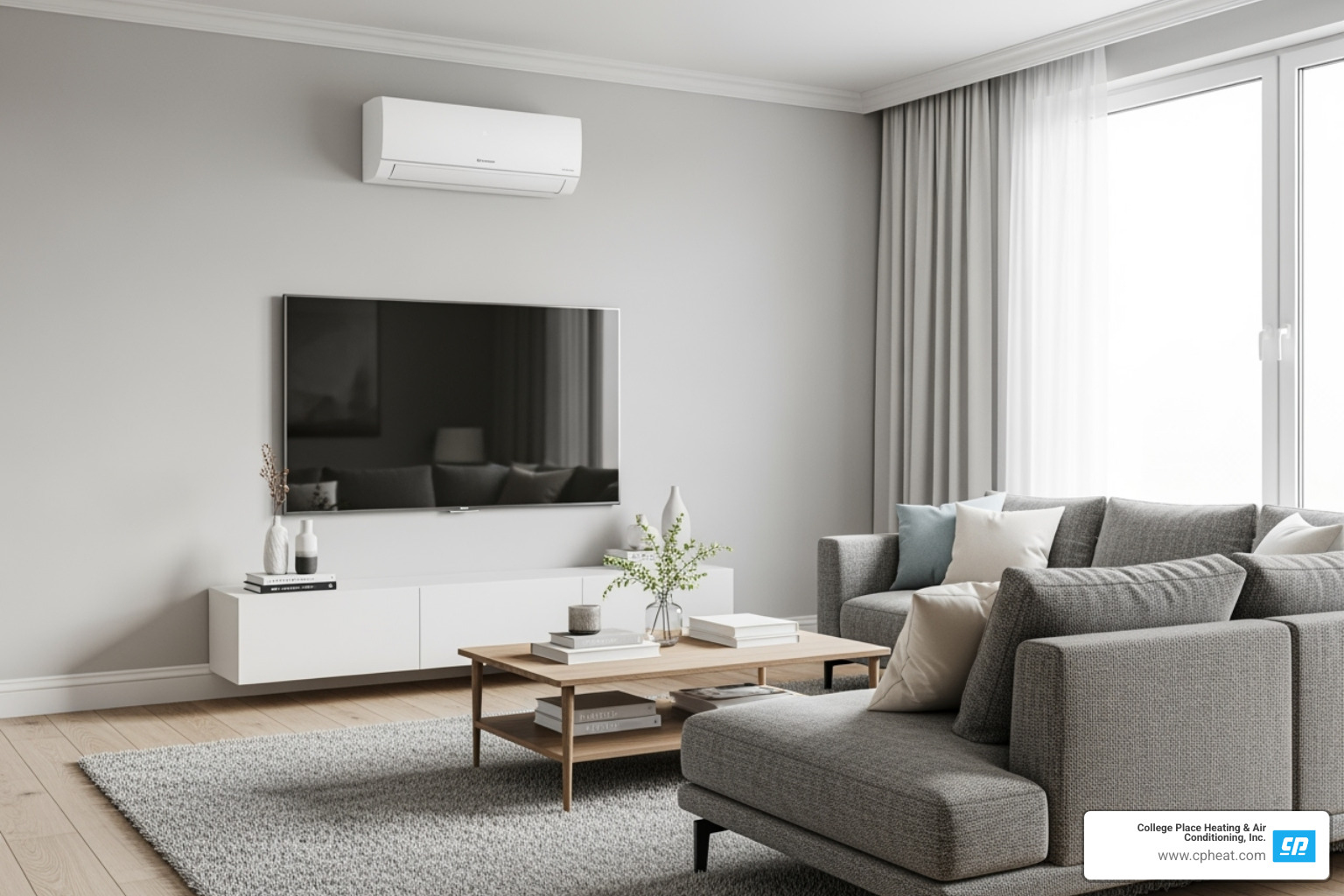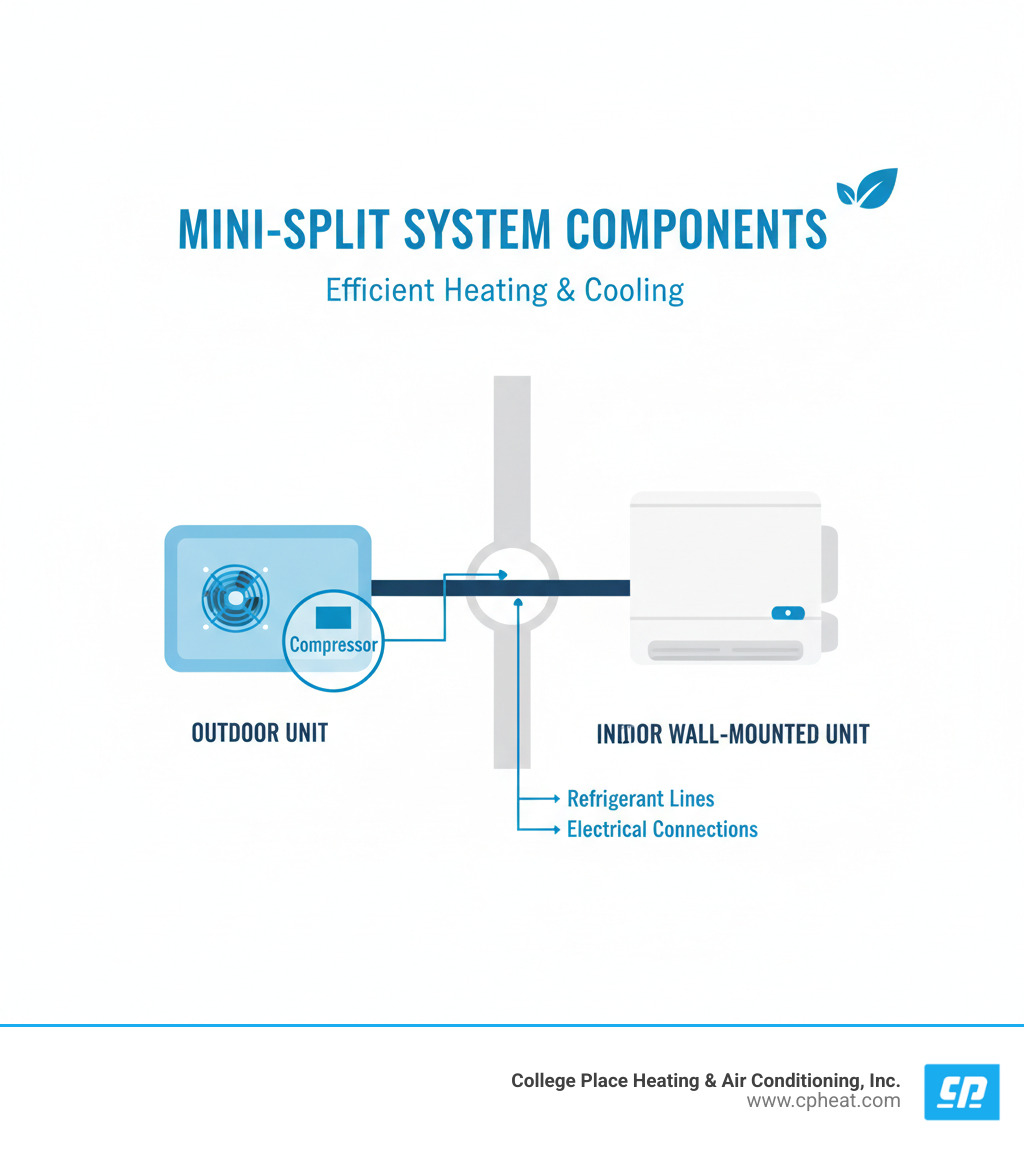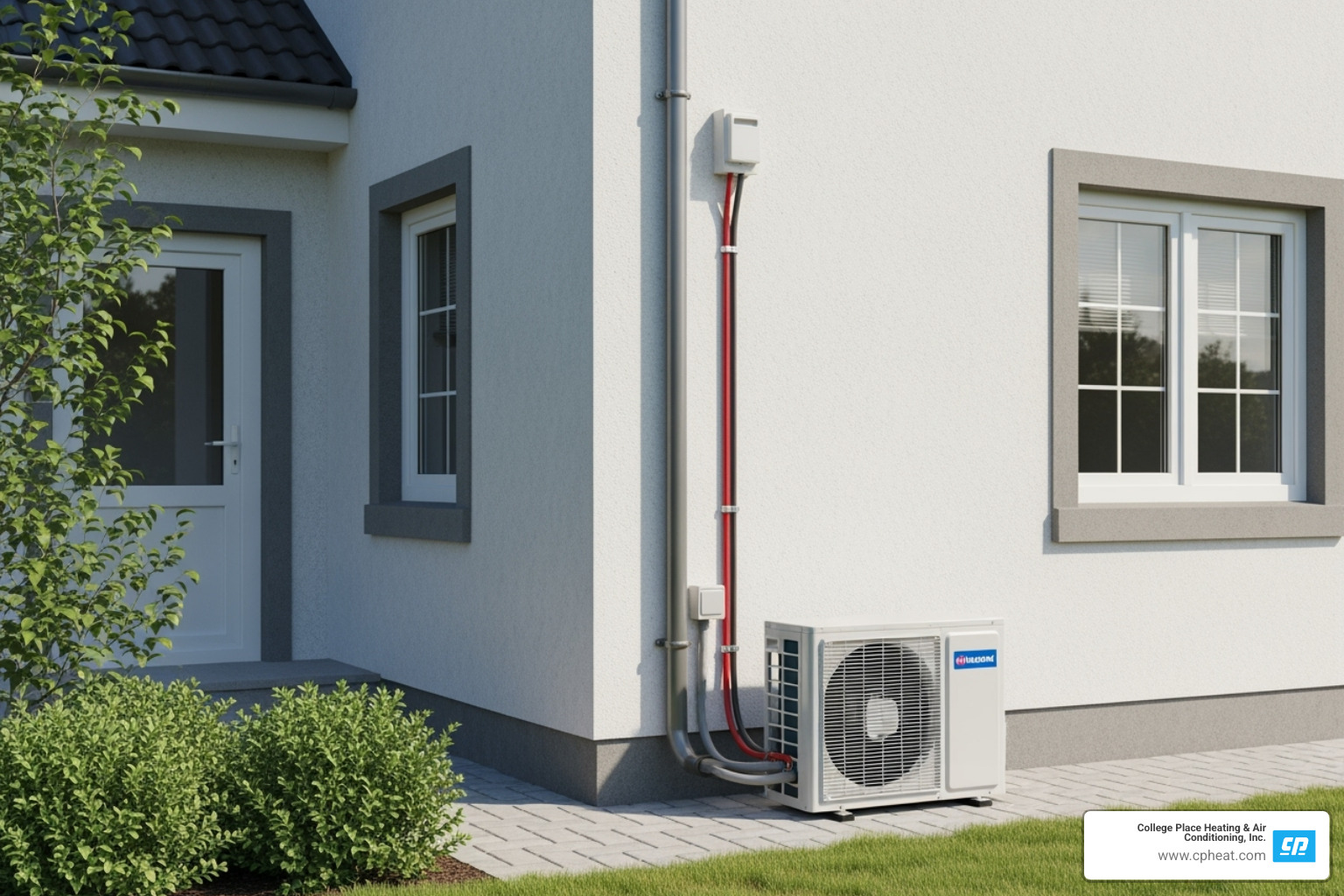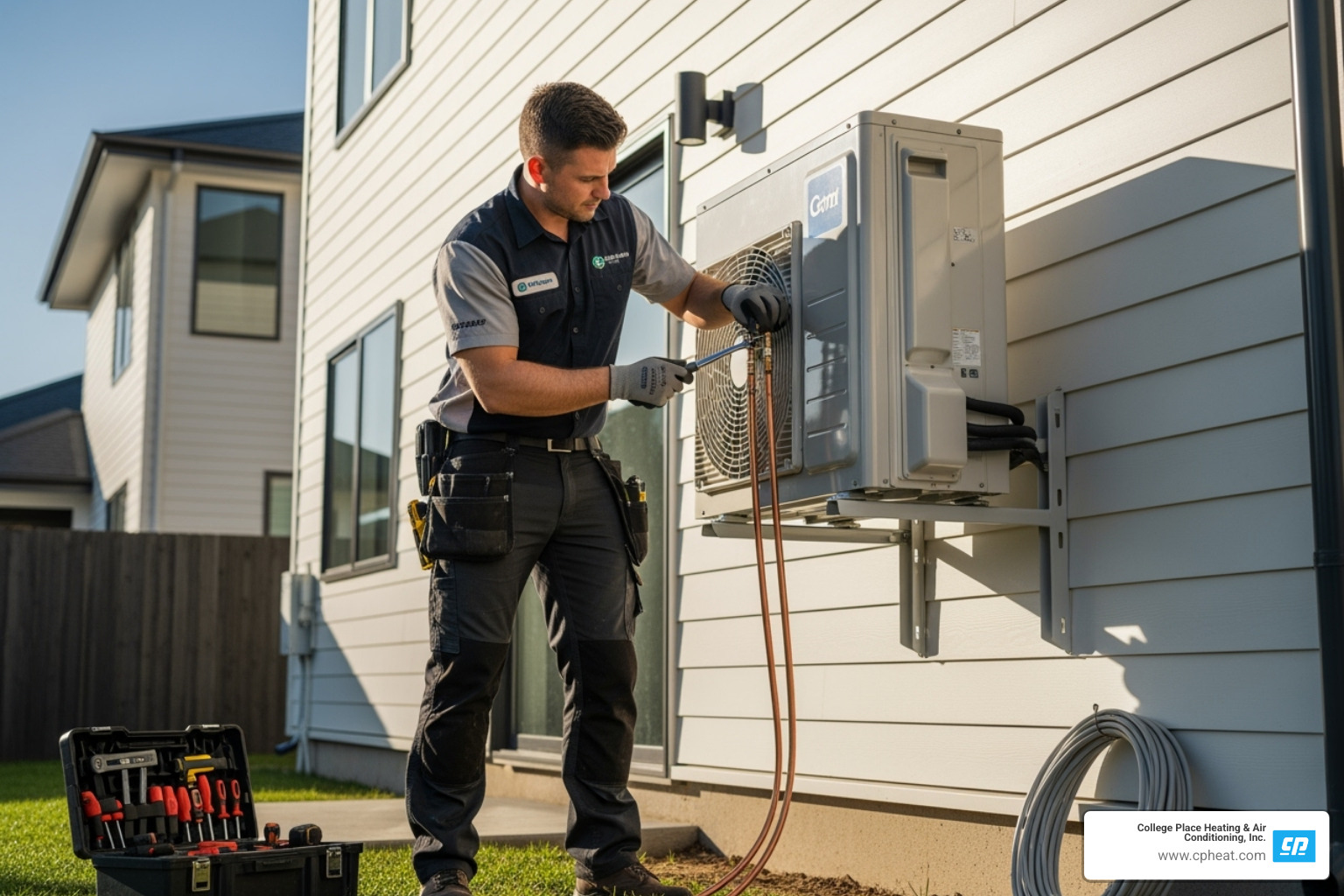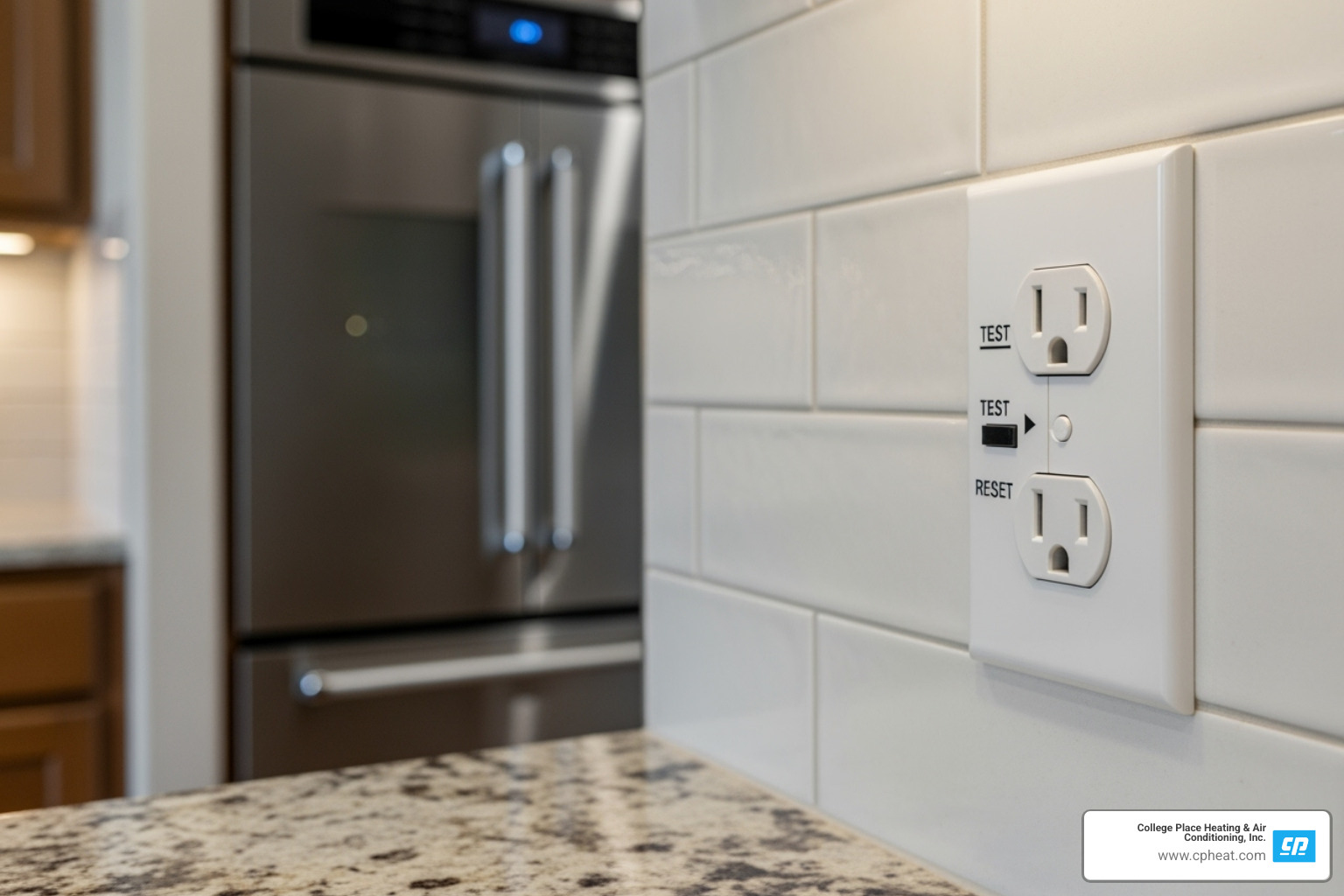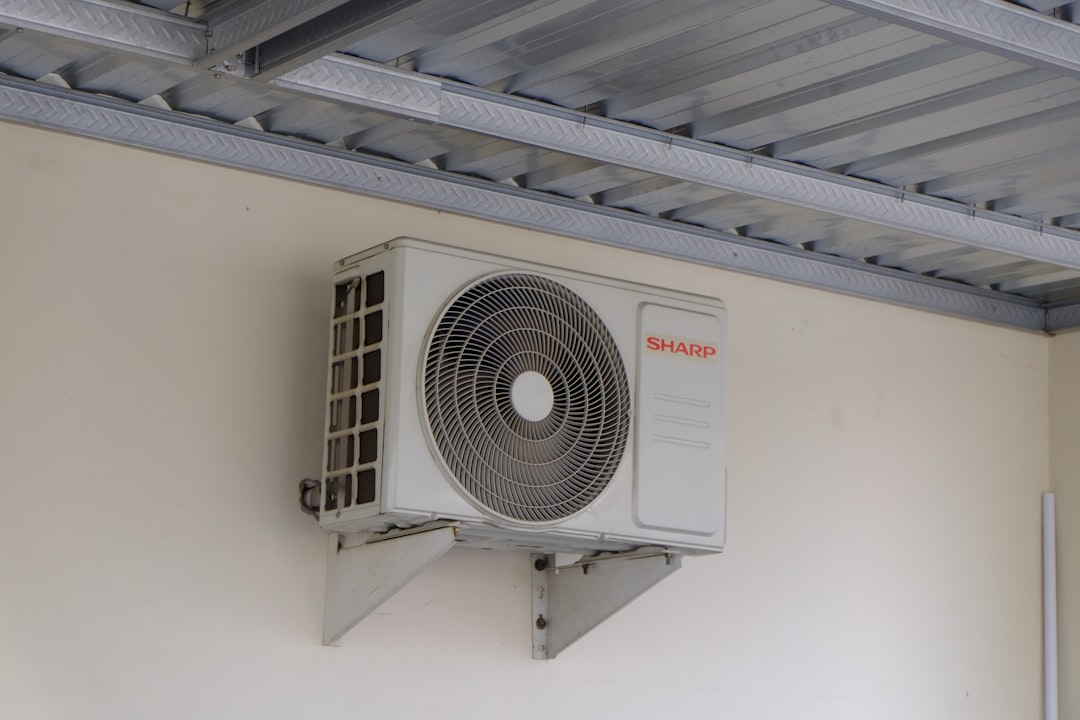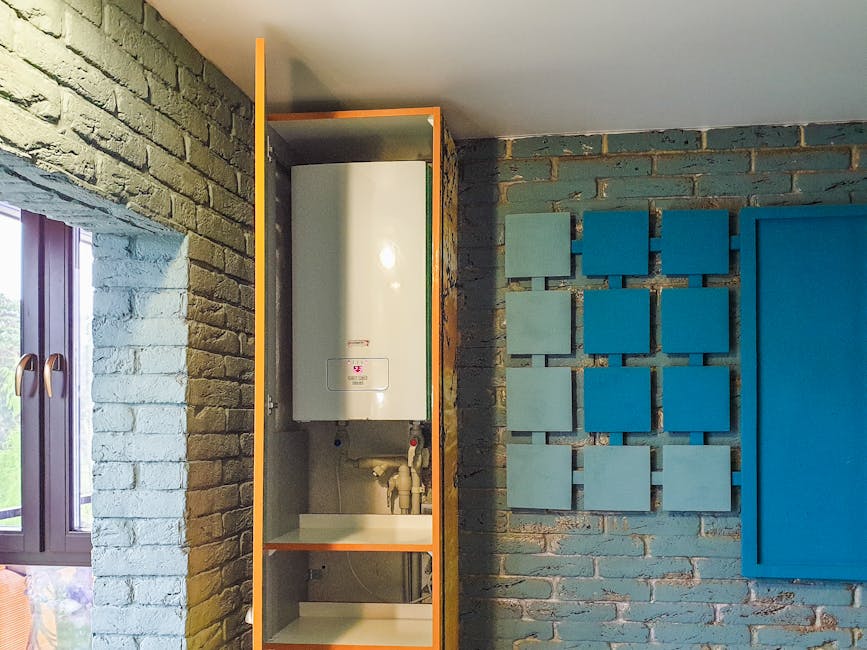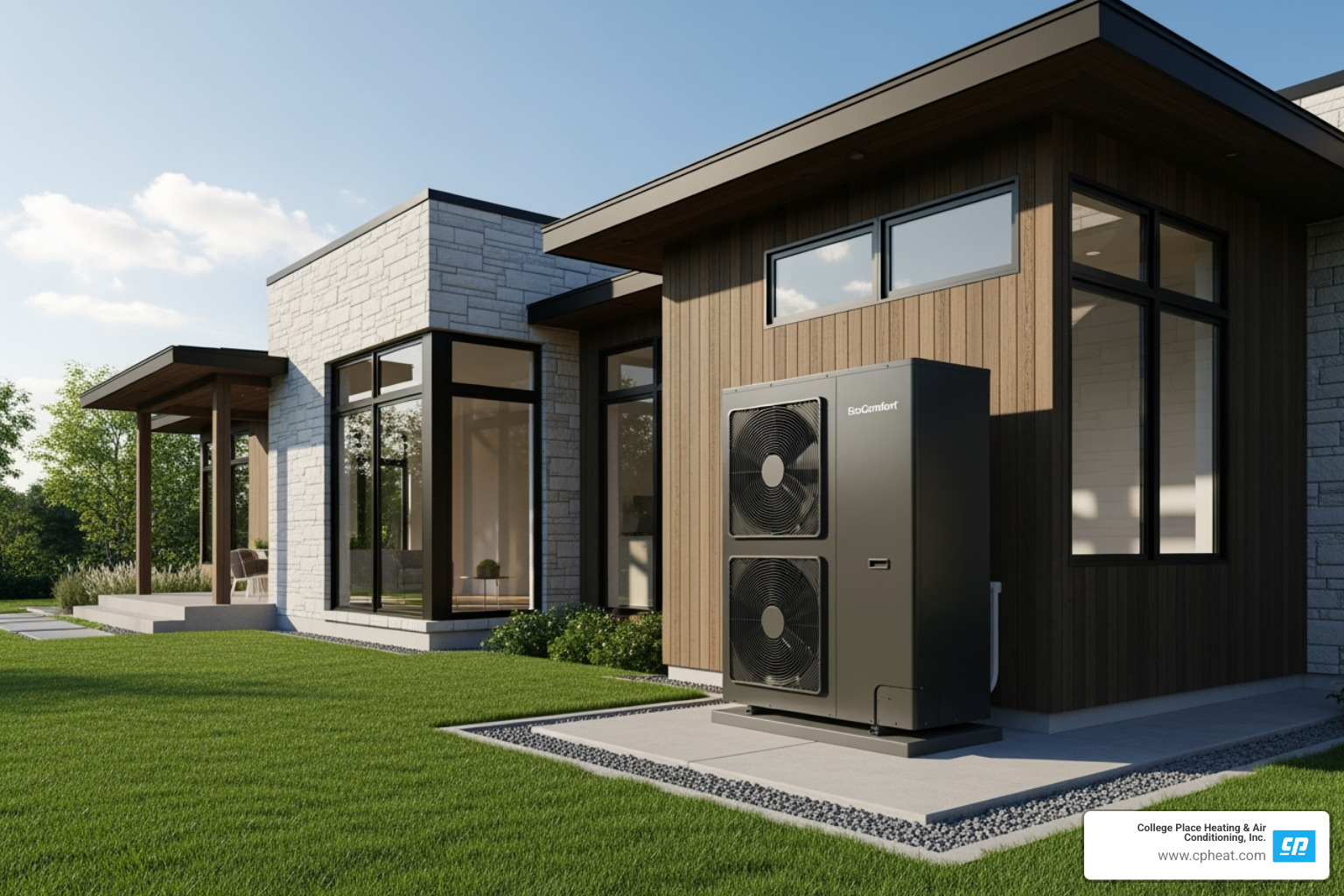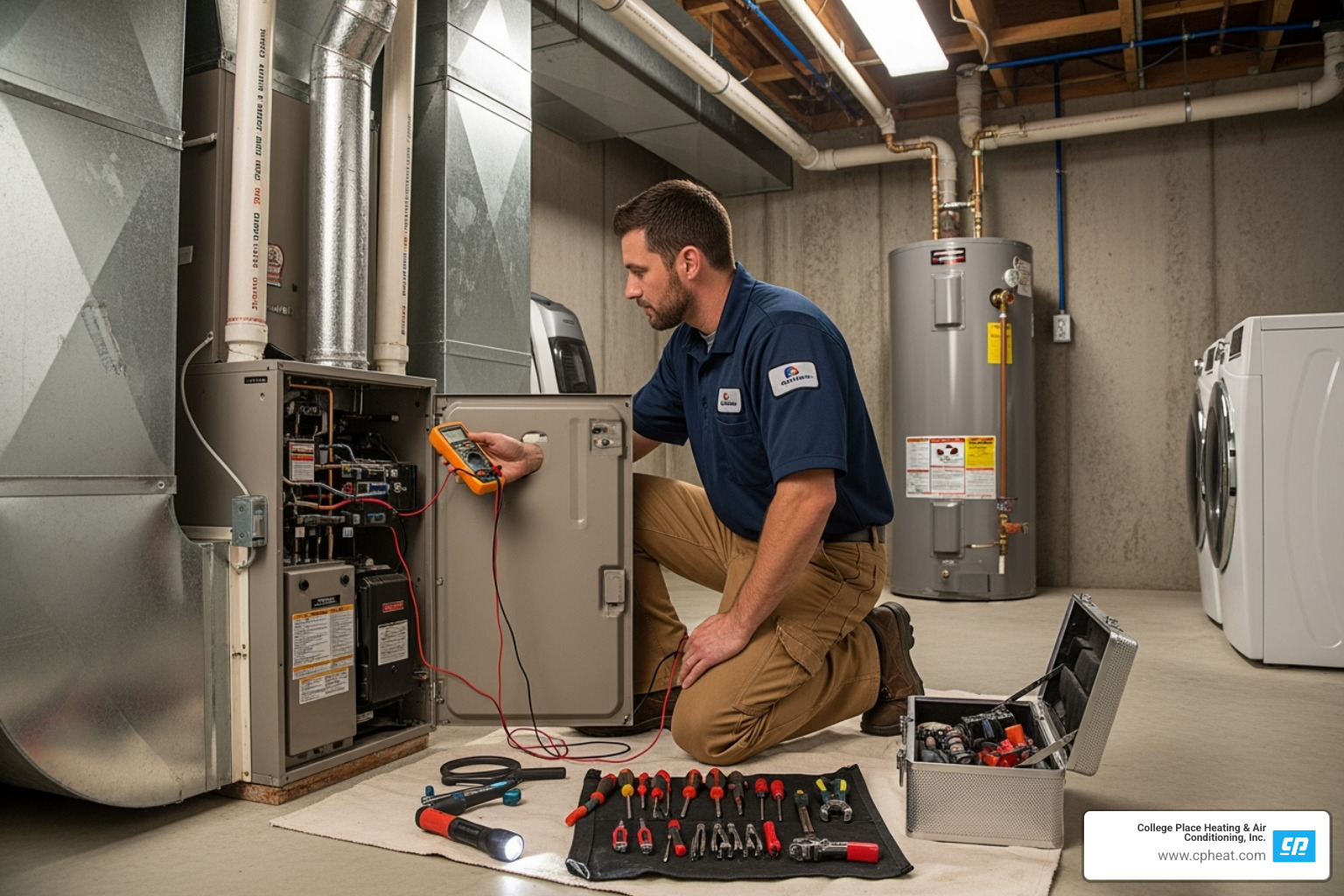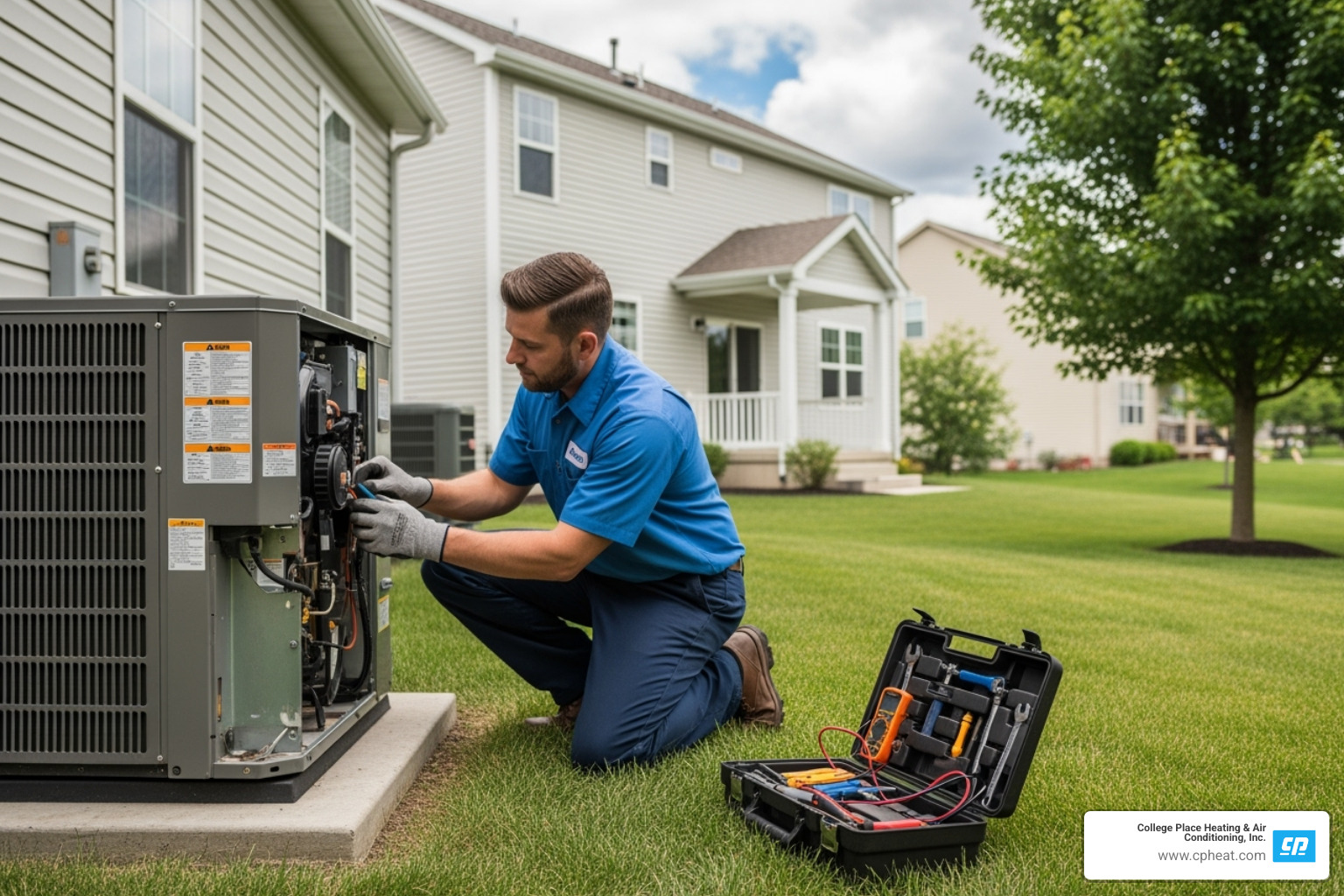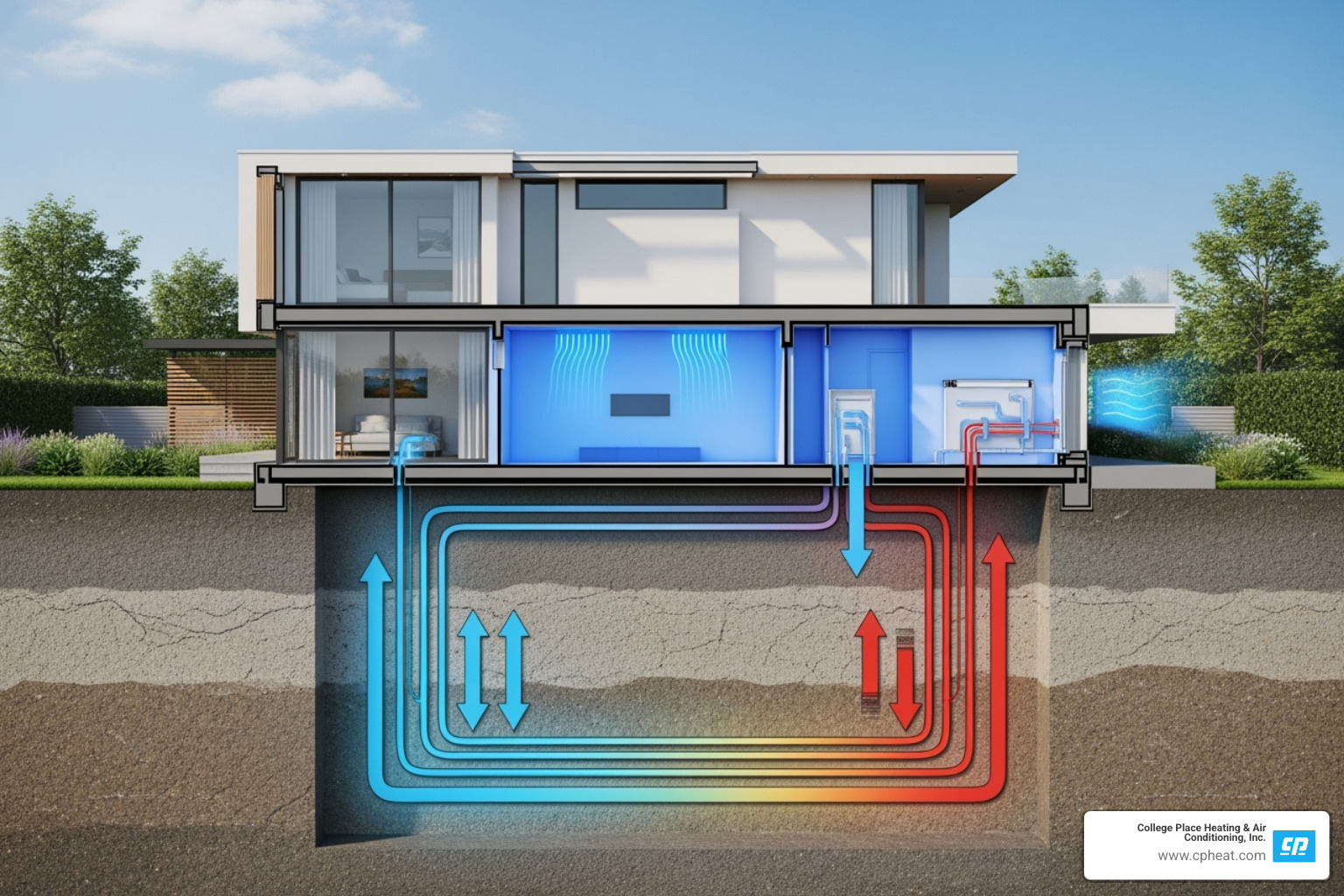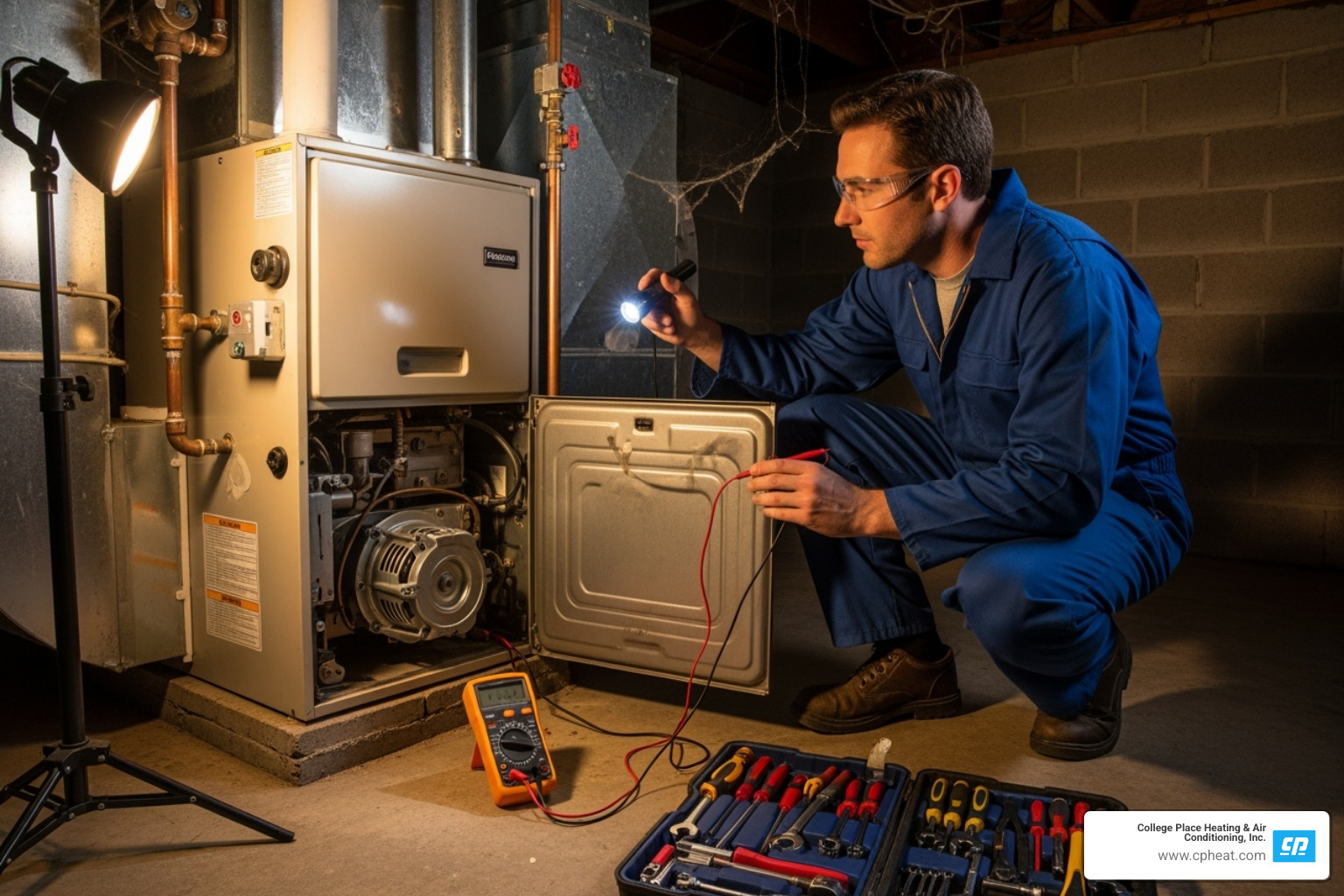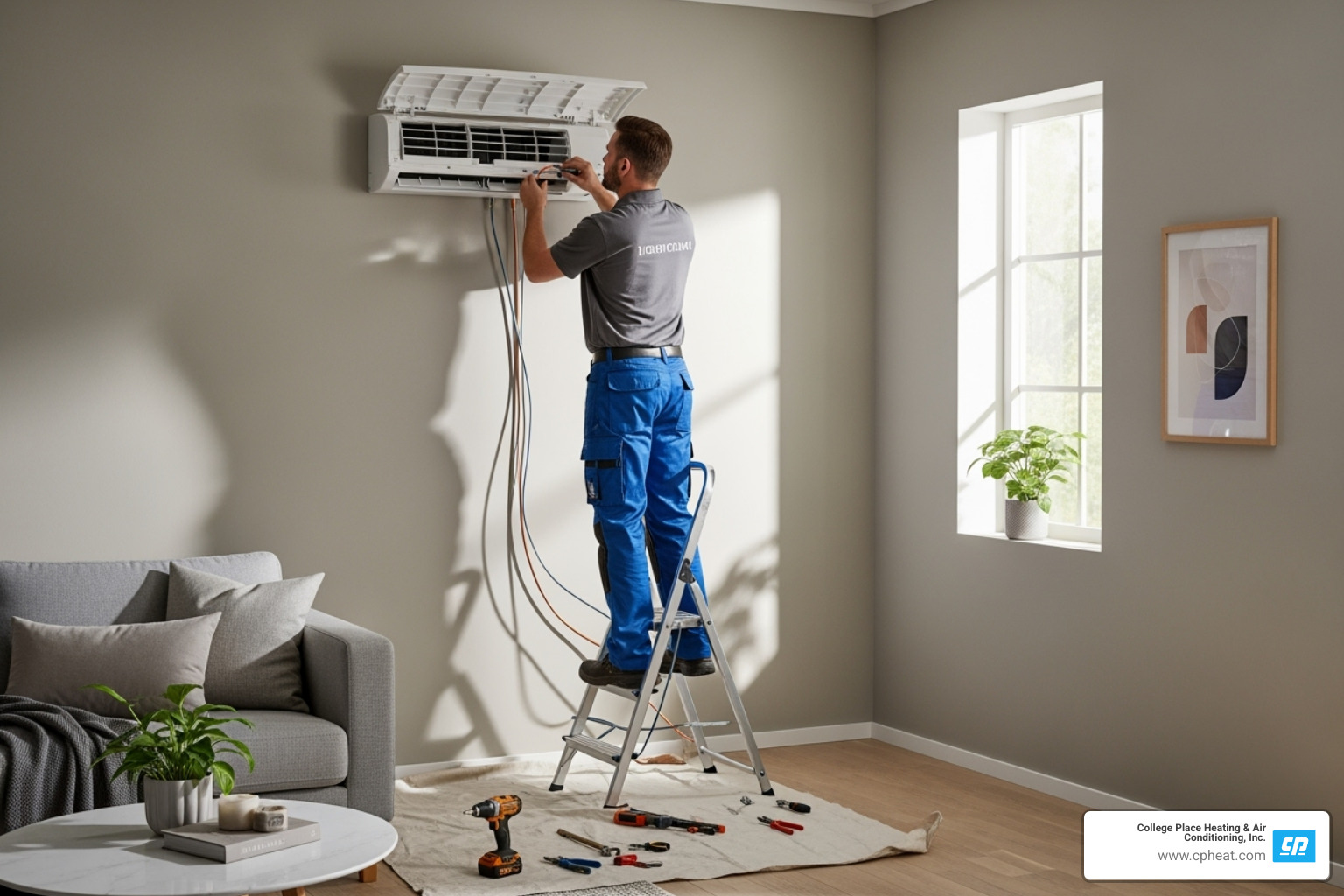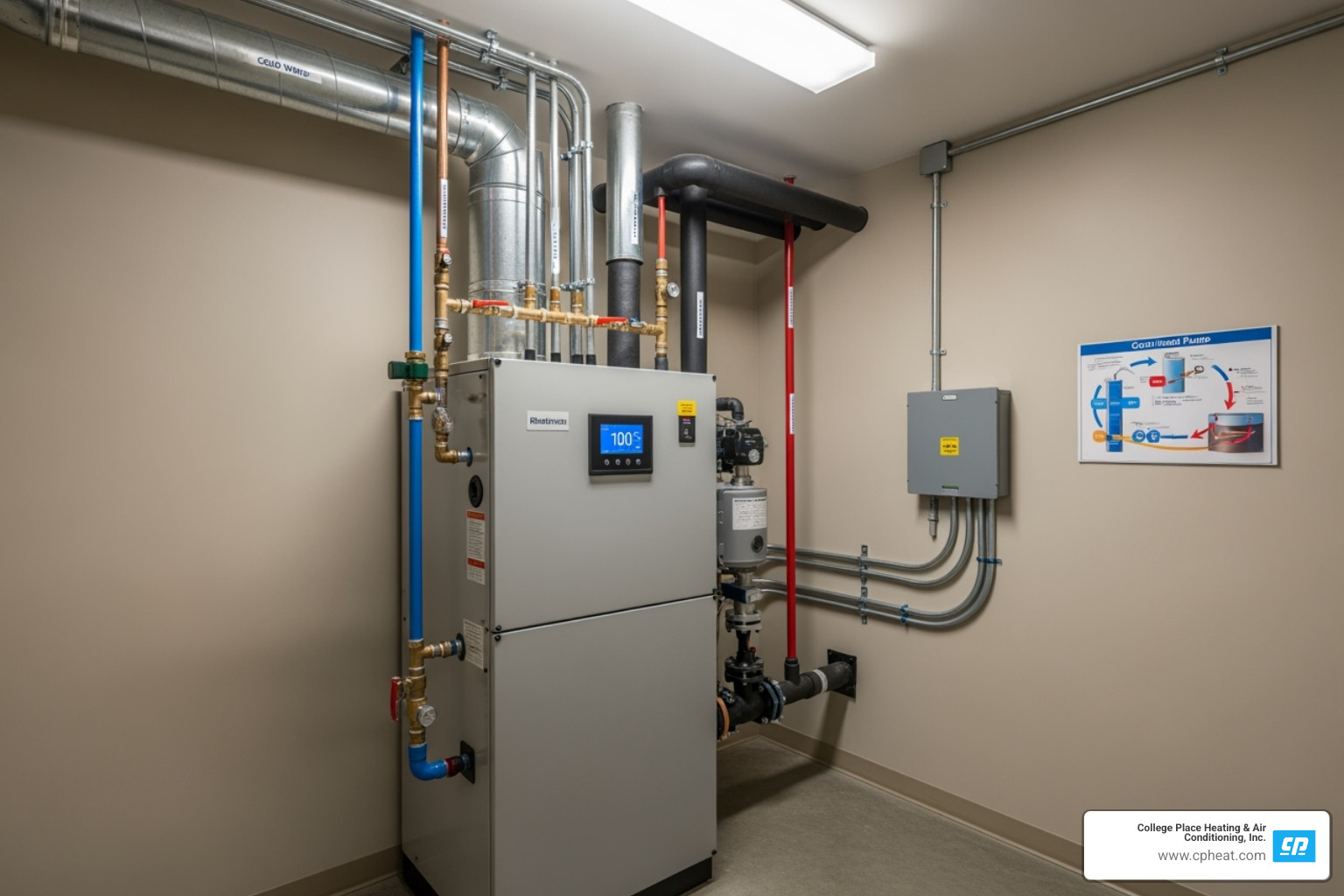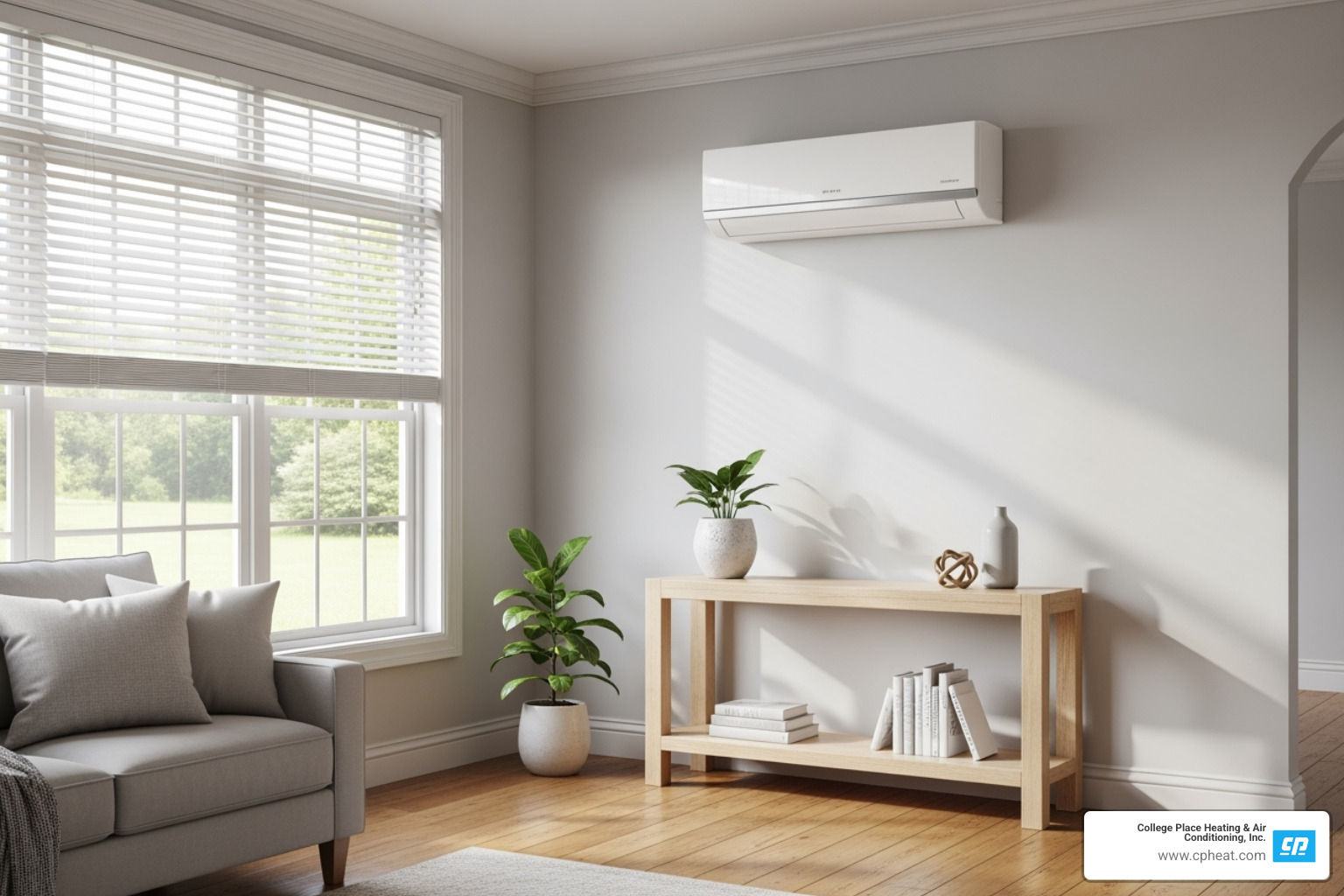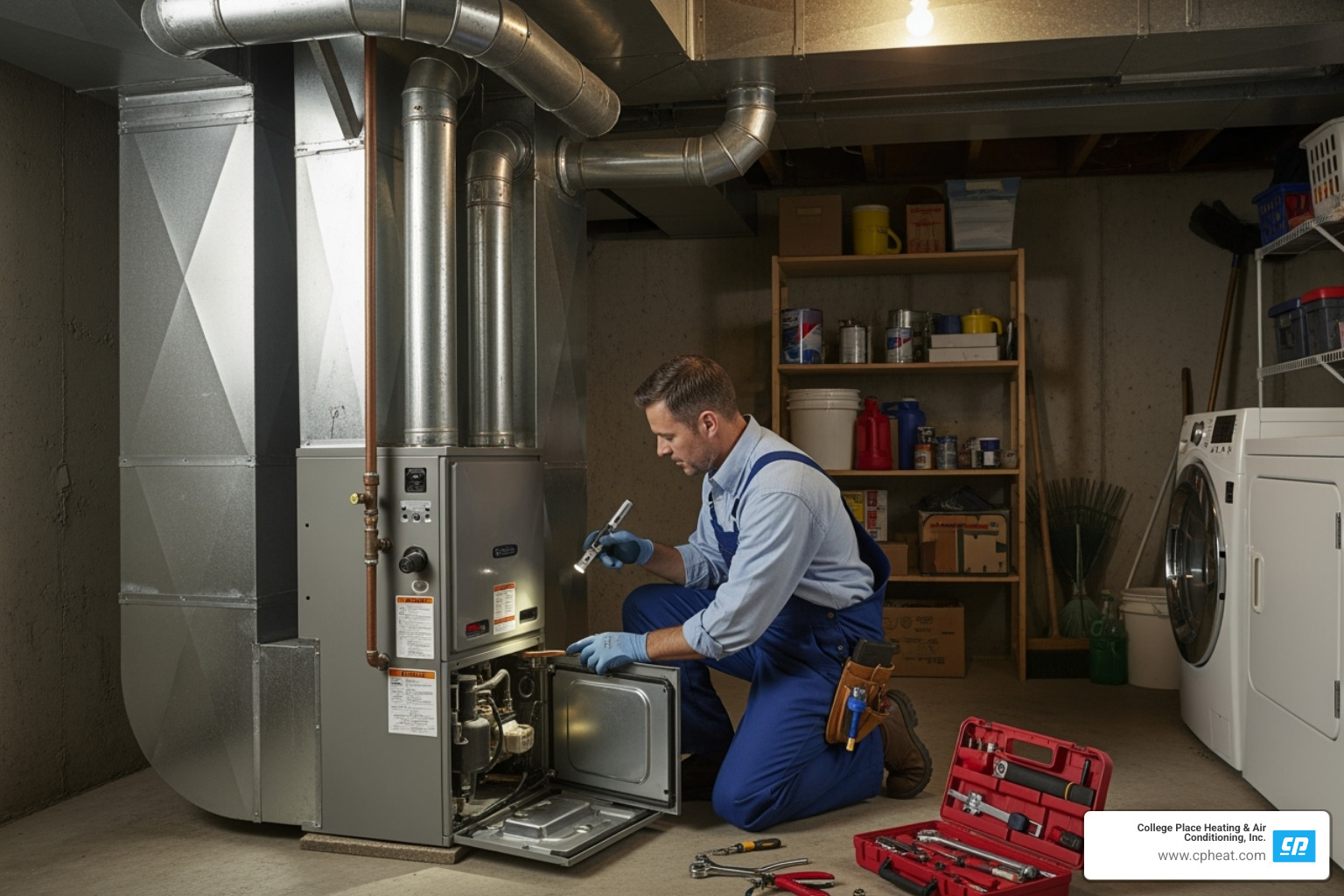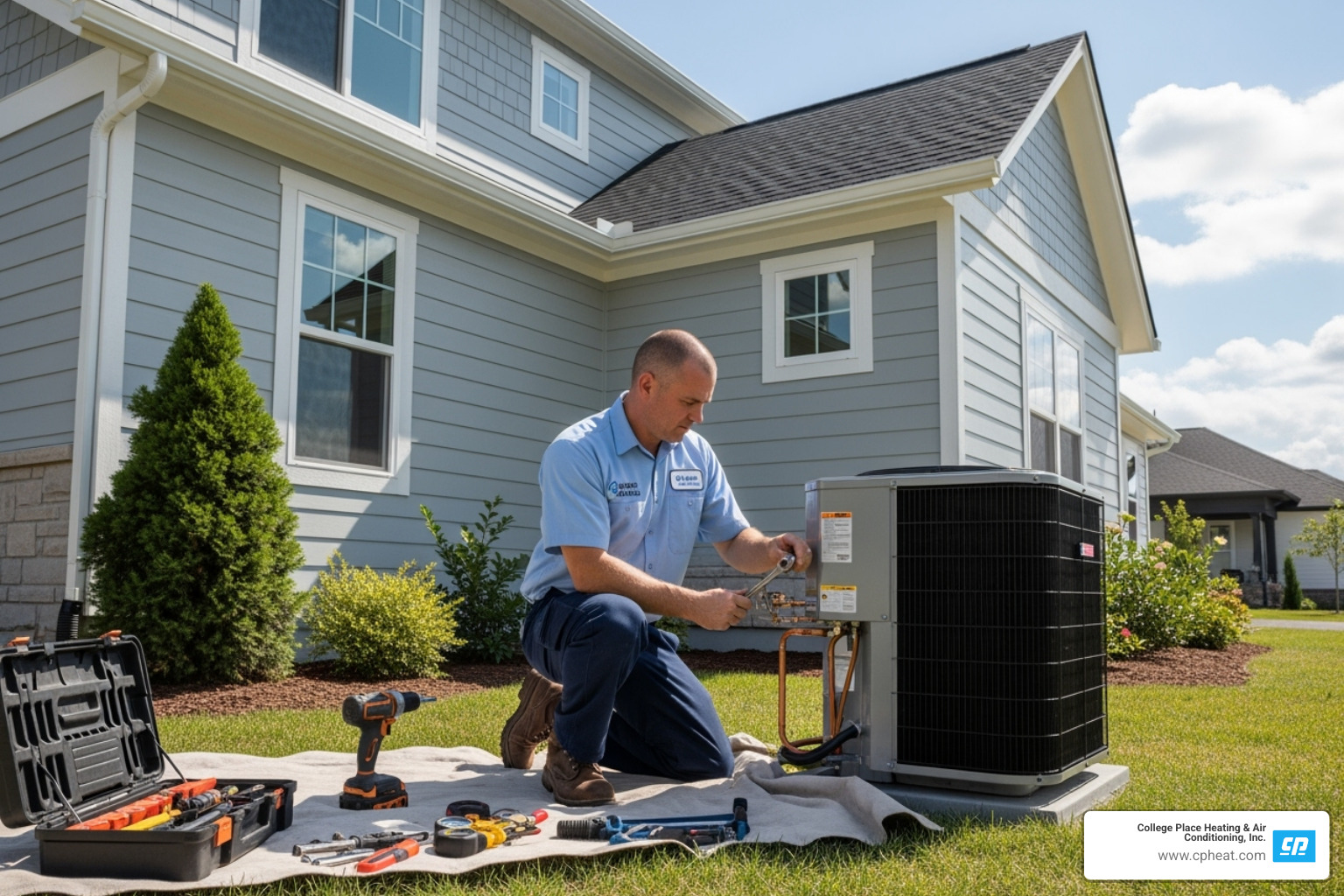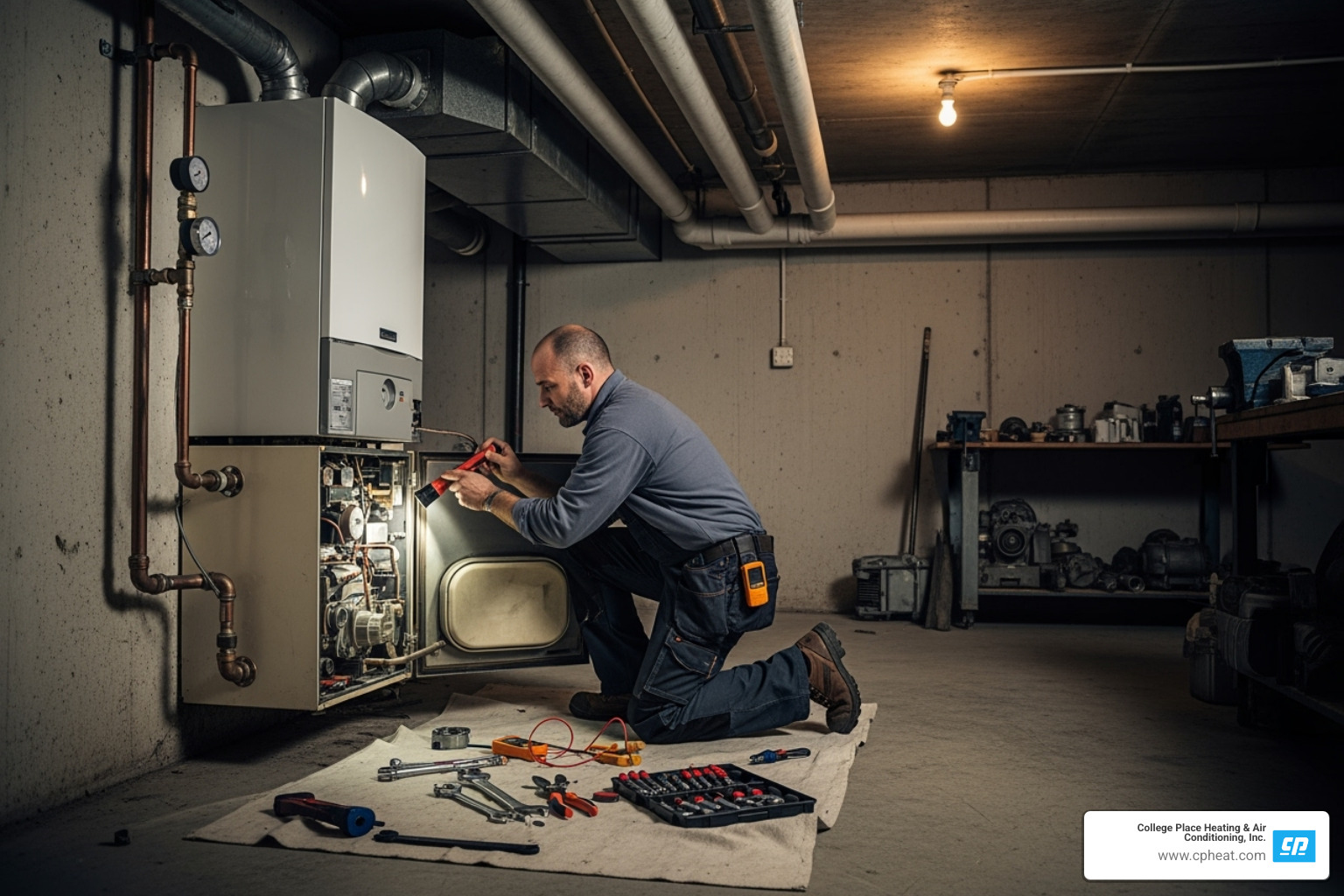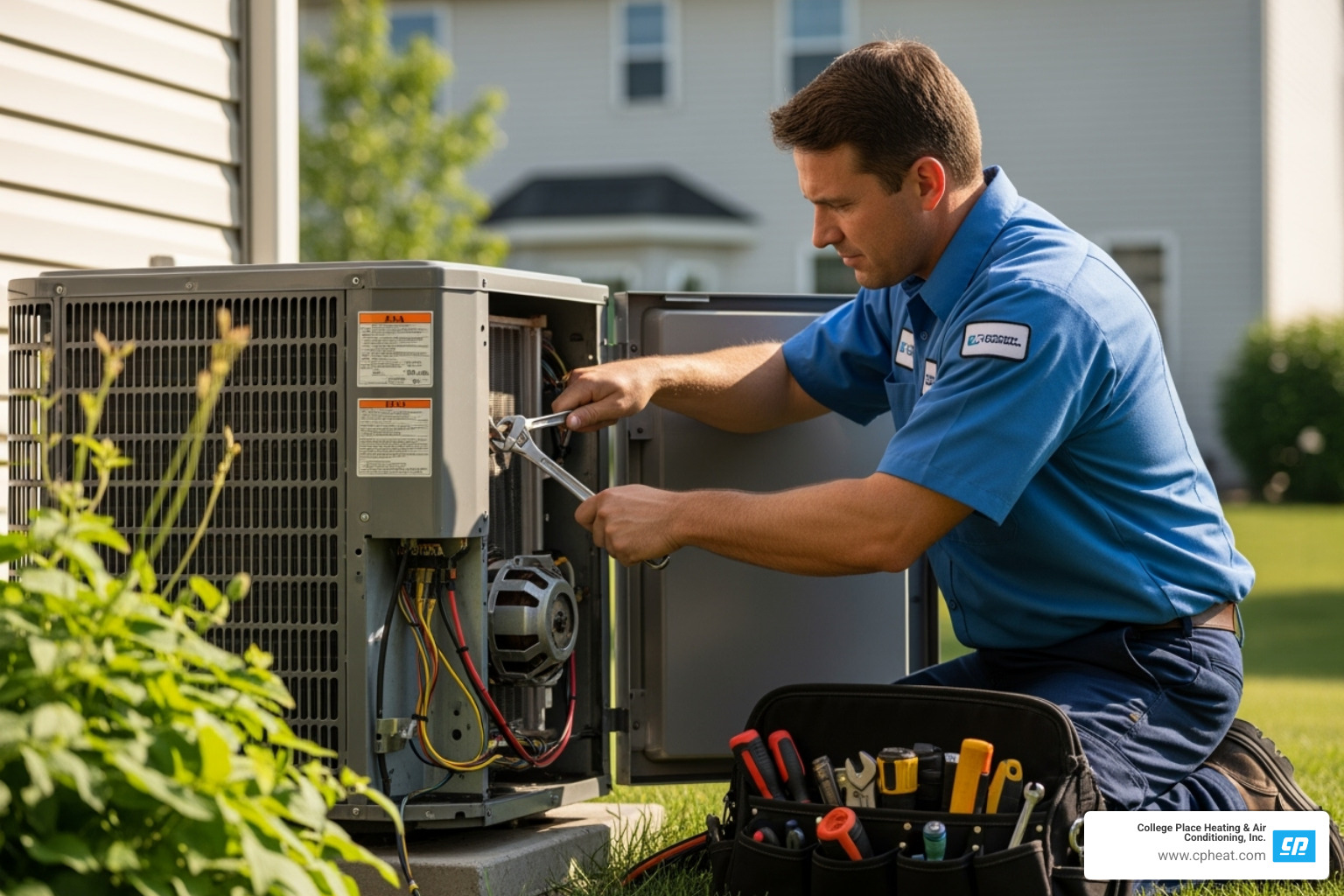Why Understanding Your Mini-Split Estimate Matters
A mini split estimate involves several key factors that determine your total investment. Ductless mini-split systems are popular in the Walla Walla Valley for their zoned comfort and impressive energy efficiency. However, when you receive an estimate, the numbers can be complex. It’s more than just hardware; it reflects your home’s unique layout, installation complexity, and the expertise needed for optimal performance.
Quick Cost Factors:
- System Sizing – Proper BTU capacity based on square footage, insulation, and climate
- Zones – Single-zone systems cost less than multi-zone configurations
- Unit Style – Wall-mounted, ceiling cassette, floor-mounted, or concealed duct options
- Efficiency – Higher SEER/HSPF ratings mean better long-term savings
- Installation – Labor for mounting, line sets, electrical work, permits
- Additional Work – Electrical panel upgrades, old system removal
Understanding these factors helps you compare estimates accurately, make informed decisions, recognize the value of professional installation, and plan for long-term savings. This guide breaks down every element that shapes your mini-split estimate, from system sizing and equipment selection to labor and long-term value.
What is a Mini-Split System? The Basics Behind Your Comfort
Imagine perfect, quiet comfort in one room while another stays at a different temperature, all without bulky window units or leaky ductwork. That’s the appeal of mini-split systems for homeowners in the Walla Walla Valley.
A mini-split is often called “ductless” because it delivers heating and cooling directly to rooms without the extensive duct networks of traditional central air. This ductless technology makes mini-splits both incredibly efficient and remarkably flexible.
An outdoor unit (containing the compressor) connects to one or more indoor units via a small conduit. This conduit holds refrigerant lines, electrical wiring, and a drain line. The indoor unit conditions the air right where you need it, eliminating the 20-30% energy loss common in ductwork.
The real beauty of mini-splits is their heat pump functionality. They work year-round, pulling heat from your home in the summer and extracting it from the outdoor air in the winter to warm your home. This makes them a smart, efficient solution for our climate. Understanding how these systems work helps explain what you’re investing in. For more details, check out our guide on Mini Split Installation Benefits.
Single-Zone vs. Multi-Zone Systems
One of the biggest decisions affecting your mini split estimate is choosing between single-zone and multi-zone configurations.
A single-zone system pairs one outdoor unit with one indoor unit, making it perfect for solving a specific comfort problem, like a new sunroom, a converted garage, or a single room in an older home without ductwork.
Multi-zone systems offer whole-home possibilities. One outdoor unit connects to multiple indoor units—typically up to five or more—giving you independent temperature control in different rooms. This is the ultimate in personalized comfort and energy efficiency, allowing you to condition only the rooms you’re using. Whether you’re considering a single room or multiple zones, we can help you explore the right Mini Split Air Conditioner for your needs.
The Main Components
Your mini split estimate covers several key components working together:
- The outdoor compressor/condenser unit is the powerhouse. Mounted outside, it absorbs or releases heat to provide heating and cooling. Its capacity determines how many indoor units it can support.
- The indoor air-handling units (or “heads”) are the sleek units mounted inside your rooms. They contain a fan, coil, and filter to deliver conditioned air quietly and efficiently.
- The conduit line set is a small bundle connecting the indoor and outdoor units. It carries refrigerant lines, electrical wiring, and a condensate drain line.
- Remote controls give you command over each indoor unit’s temperature, fan speed, and operating modes. Many newer systems also offer smartphone app control.
Key Factors That Shape Your Mini-Split Estimate
Your mini split estimate isn’t a flat rate because your home is unique. We customize every solution to your home’s layout, your comfort goals, and the technical requirements needed for long-term performance. Think of it as a custom-fit suit versus off-the-rack—the fit makes all the difference. Understanding what goes into your estimate helps you see the value behind the numbers.
System Size and Capacity (BTUs)
When it comes to mini-splits, bigger isn’t better. The right “size” refers to the system’s heating and cooling capacity, measured in British Thermal Units (BTUs). An undersized system will run constantly and struggle to keep up, while an oversized system will cycle on and off too quickly (“short cycling”), wasting energy and failing to control humidity. This shortens the system’s lifespan.
That’s why we perform a professional load calculation—a comprehensive assessment that goes beyond simple square footage. We evaluate your home’s insulation quality, ceiling height, window types and orientation, and local Walla Walla Valley climate extremes. This careful sizing process ensures your system runs efficiently, maintains consistent comfort, and lasts as long as it should. It’s one of the most critical factors in your mini split estimate.
Number of Zones and Indoor Unit Style
The choice between a single room or a whole-home solution significantly shapes your estimate. A single-zone system (one indoor unit to one outdoor unit) is a focused, straightforward solution for a specific area. A multi-zone system (multiple indoor units connected to one outdoor unit) provides independent temperature control for different rooms, offering personalized comfort and energy savings.
The style of indoor unit also affects aesthetics and installation complexity:
- Wall-mounted units are the most popular, effective, and straightforward to install.
- Ceiling cassettes sit flush with your ceiling for a discreet look.
- Floor-mounted units are great for rooms with limited wall space and are effective for heating.
- Concealed duct units hide in the ceiling or walls, using short duct runs for a traditional vented look.
Each style has different installation requirements, which affects your estimate. Explore options on our Mini Split Installation page.
Energy Efficiency Ratings (SEER & HSPF)
Thinking long-term pays off. Energy efficiency ratings tell you how much comfort you get for every dollar spent on electricity.
- SEER (Seasonal Energy Efficiency Ratio) measures cooling efficiency. A higher SEER means lower electricity use during our warm summers.
- HSPF (Heating Seasonal Performance Factor) measures heating efficiency. A higher HSPF means your heat pump uses less energy in the winter.
Systems with higher SEER and HSPF ratings typically have a higher upfront investment, but this is often recovered through lower energy bills over the system’s lifespan. Additionally, many high-efficiency systems qualify for federal tax credits, state incentives, and utility rebates, which can significantly reduce your overall cost. For more information, check out energy efficient systems resources. We help you see the complete picture—not just what you’ll invest today, but what you’ll save tomorrow.
Deconstructing the Installation Process and Associated Labor
A significant portion of your mini split estimate reflects the skilled labor required for a precise installation. This process is critical to your system’s long-term efficiency, quiet operation, and reliability. Even the best equipment will underperform if not installed correctly, leading to poor performance, higher energy bills, and voided warranties.
Why Professional Installation is Crucial for Your Mini-Split Estimate
While DIY kits exist, professional installation is the foundation of a system that delivers on its promises. Here’s what our expertise provides:
- Proper Sizing: We don’t guess. Our technicians perform detailed load calculations to ensure your system is perfectly matched to your space.
- Refrigerant Handling: This requires certification. Improper charging or leaks can cripple your system’s efficiency and create safety hazards.
- Electrical Connections: Mini-splits require dedicated circuits. Licensed electricians ensure all wiring meets local codes, protecting your home and family.
- Optimal Performance: We follow precise protocols for mounting units, insulating lines, and pitching drain lines to ensure every component works in harmony.
- Warranty Protection: Most manufacturers require professional installation by licensed technicians to keep your warranty valid. A DIY job can leave you without coverage.
At College Place Heating & Air Conditioning, we’ve been perfecting our craft since 1949. Choose an installer experienced with mini split systems who understands these sophisticated systems. Learn more about our approach to Ductless systems.
Understanding Labor and Additional Considerations
The labor on your mini split estimate covers several detailed steps:
- Mounting the Units: Indoor units must be level and positioned for optimal airflow. Outdoor units need a stable, often liftd, foundation to protect them from snow and debris.
- Running the Line Sets: This is often the most labor-intensive part. The conduit containing refrigerant lines, wiring, and a drain line must be routed from the outdoor unit to each indoor head, sometimes through attics or crawlspaces.
- Electrical Work: This typically involves running a new, dedicated circuit from your electrical panel. In some older homes, a potential electrical panel upgrade may be necessary to safely support the new system.
- System Testing: After connection, technicians vacuum the lines to remove contaminants and charge the system with the precise amount of refrigerant. They then test for leaks and verify proper operation.
- Permits and Inspections: We handle required local permits and inspections, which verify that the work meets safety standards and protects you as a homeowner.
- Old System Removal: If you’re replacing an old system, we’ll handle the proper, environmentally-safe disposal of the old equipment.
Long-Term Value: Savings, Incentives, and Maintenance
Your mini split estimate is just the beginning. These systems deliver remarkable long-term value that extends far beyond the day of installation. They are champions of energy efficiency, often slashing monthly utility bills and reducing your carbon footprint. A professionally installed mini-split system can also increase your home’s resale value, as modern buyers actively seek efficient HVAC solutions.
If you’re exploring options in nearby areas, our Mini Split Installation page for Milton-Freewater, OR offers helpful local insights.
Potential Savings and Available Incentives
Mini-splits save you money month after month. Traditional systems can lose up to 30% of conditioned air through leaky ducts. Mini-splits eliminate this waste by delivering air directly into your rooms. Plus, zoned control means you only heat or cool the spaces you’re using, leading to substantial savings on utility bills.
There’s more good news. The federal government often offers tax credits for qualifying high-efficiency mini-split heat pumps, offsetting a portion of your initial investment. Many local utility companies also provide rebates and incentives. The Database of State Incentives for Renewables & Efficiency (DSIRE) is an excellent resource to explore what’s available. We stay updated on these programs to help our Walla Walla Valley customers maximize their savings.
Ongoing Maintenance for Peak Performance
Mini-splits are reliable and low-maintenance, but regular attention keeps them running at their best.
Your main task is simple: clean the washable filters in the indoor units monthly. Just rinse the filter, let it dry, and pop it back in. This ensures optimal airflow and good indoor air quality.
Beyond that, we recommend a professional annual tune-up. Our technicians will inspect all components, check refrigerant levels, perform a professional coil cleaning, tighten electrical connections, and verify peak efficiency. This proactive approach catches small issues before they become big problems and ensures your system provides reliable comfort for years to come. With proper care, mini-splits often outlast traditional central AC units, protecting your investment for the long haul.
Frequently Asked Questions about Mini-Split Systems
As we’ve helped Walla Walla Valley homeowners since 1949, certain questions about mini-splits come up often. Here are answers to the most common inquiries we hear when people are evaluating their mini split estimate.
How do mini-splits compare to other home comfort solutions?
Mini-splits stand out for their zoned control and higher efficiency. Unlike central air, they don’t use ducts, eliminating the energy loss (up to 30%) common in ducted systems. Compared to window or portable AC units, mini-splits are significantly quieter, more efficient, and offer a more permanent, aesthetically pleasing solution. While the initial investment is higher, the long-term energy savings, superior comfort, and increased property value provide excellent value over time.
What are the potential disadvantages of mini-split systems?
There are a few key considerations. The primary one is the higher initial installation investment compared to portable options. Second is aesthetic preference; the indoor units are visible on the wall or ceiling. While modern units are sleek, they aren’t hidden like traditional vents. Finally, professional installation is required to ensure optimal performance and maintain warranty coverage. However, this requirement ensures your system is installed correctly for long-term reliability.
How many rooms can a single mini-split system service?
The answer depends on the system type. A single-zone system services one room or “zone,” pairing one outdoor unit with one indoor unit. It’s perfect for solving a specific comfort challenge, like a home office or a new addition. A multi-zone system is ideal for whole-home solutions, using one outdoor unit to power multiple indoor units (typically two to five or more). Each indoor unit has its own control, allowing you to create distinct comfort zones throughout your home.
Get an Accurate Estimate for Your Home
You now understand the key elements of a mini split estimate, from BTU calculations and zones to efficiency ratings and installation. This knowledge empowers you to make a confident investment in your home’s comfort.
Every home is unique, which is why cookie-cutter solutions don’t work. Your home’s layout, insulation, and how you use your space all require a customized approach. What works for your neighbor might not be the right fit for your home.
That’s where we come in. Since 1949, College Place Heating & Air Conditioning has helped families across the Walla Walla Valley find their perfect comfort solution. We understand our local climate and the challenges it presents.
When you work with us, you gain a partner who will perform a thorough assessment, explain your options clearly, and design a Ductless system that fits your home, budget, and lifestyle. We’re proud of our reputation for honest service and genuine care. Whether you need to cool a single room or your entire home, we’re here to guide you every step of the way.
Ready to find what a perfectly matched mini-split system can do for your home? Let’s start the conversation.


